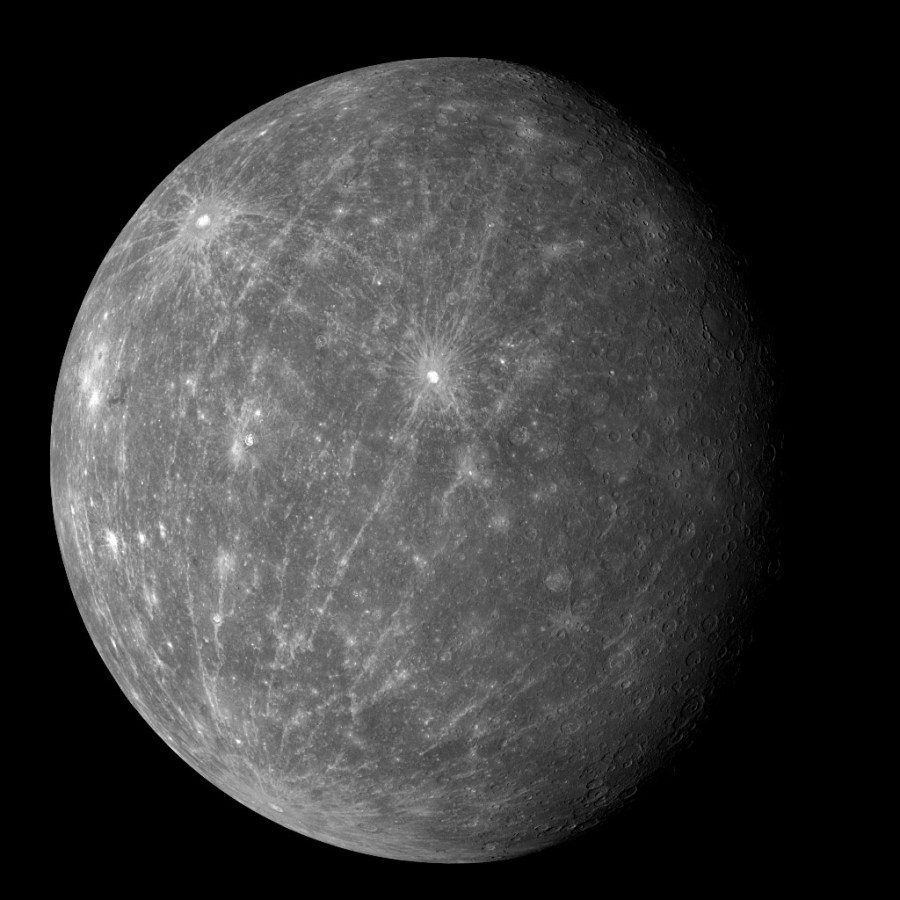
We should also note the absence of seasons, due to the minuscule tilt of the planet’s axis of rotation. Although we are accustomed to think of seasons as seasons, on a cosmic scale, it is when parts of the planet are exposed, varying in intensity, to heating by sunlight.
Surface temperatures change dramatically over time. The planet experiences much sharper temperature variations than Earth.
For one thing, the planet is much closer to the Sun. The second factor is that the atmosphere is so thin that it cannot trap solar radiation and smooth out the surface temperature.
These two factors result in very sharp temperature swings on Mercury.
The planet receives 10 times more solar energy per day than Earth.
Ainsi, la température peut atteindre jusqu’à 450 degrés centigrades. C’est suffisant pour faire fondre le plomb et le zinc. La nuit, elle descend à-173 degrés centigrades. Les conditions y sont donc très rudes.
L’orbite influe également sur l’intensité de l’exposition au soleil. L’hémisphère nord a tendance à s’incliner vers le Soleil à l’extrémité la plus longue de l’orbite de Mercure, tandis que l’hémisphère sud est à l’opposé.
Date de publication: 12-26-2023
Mettre à jour la date: 12-26-2023
